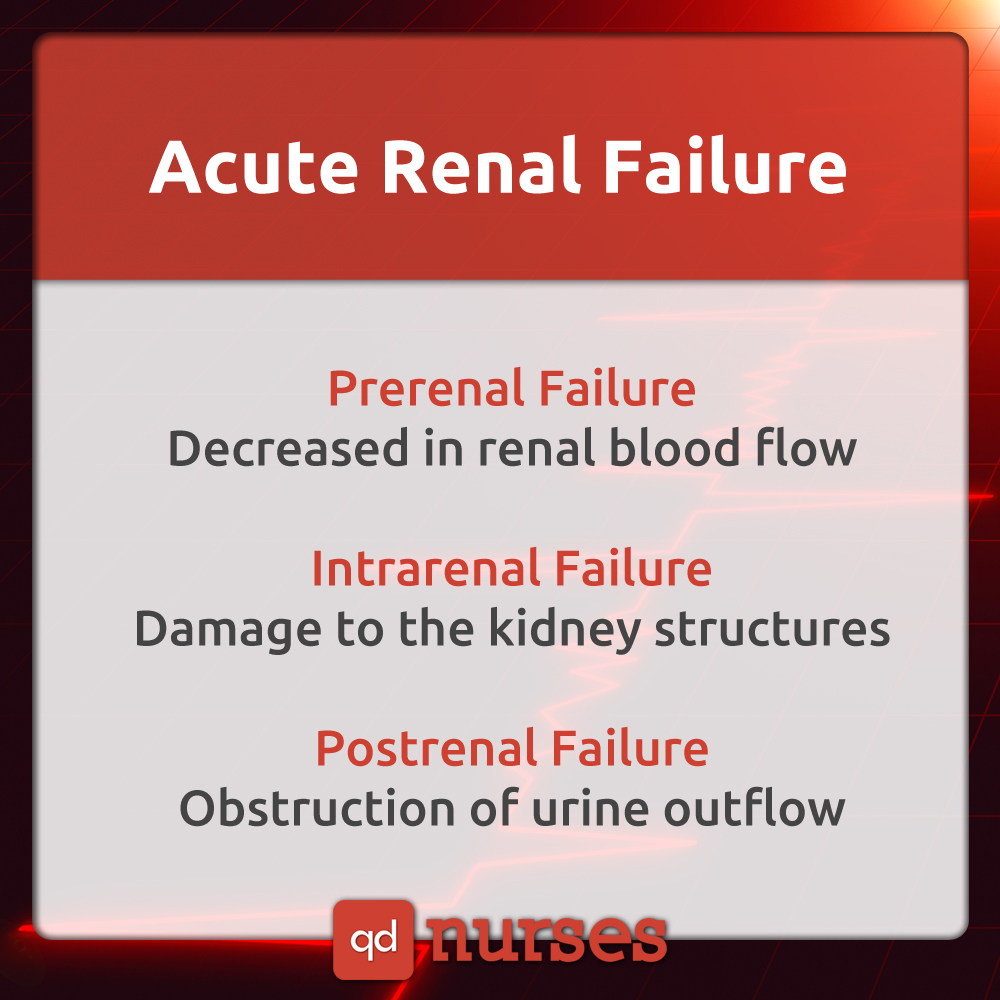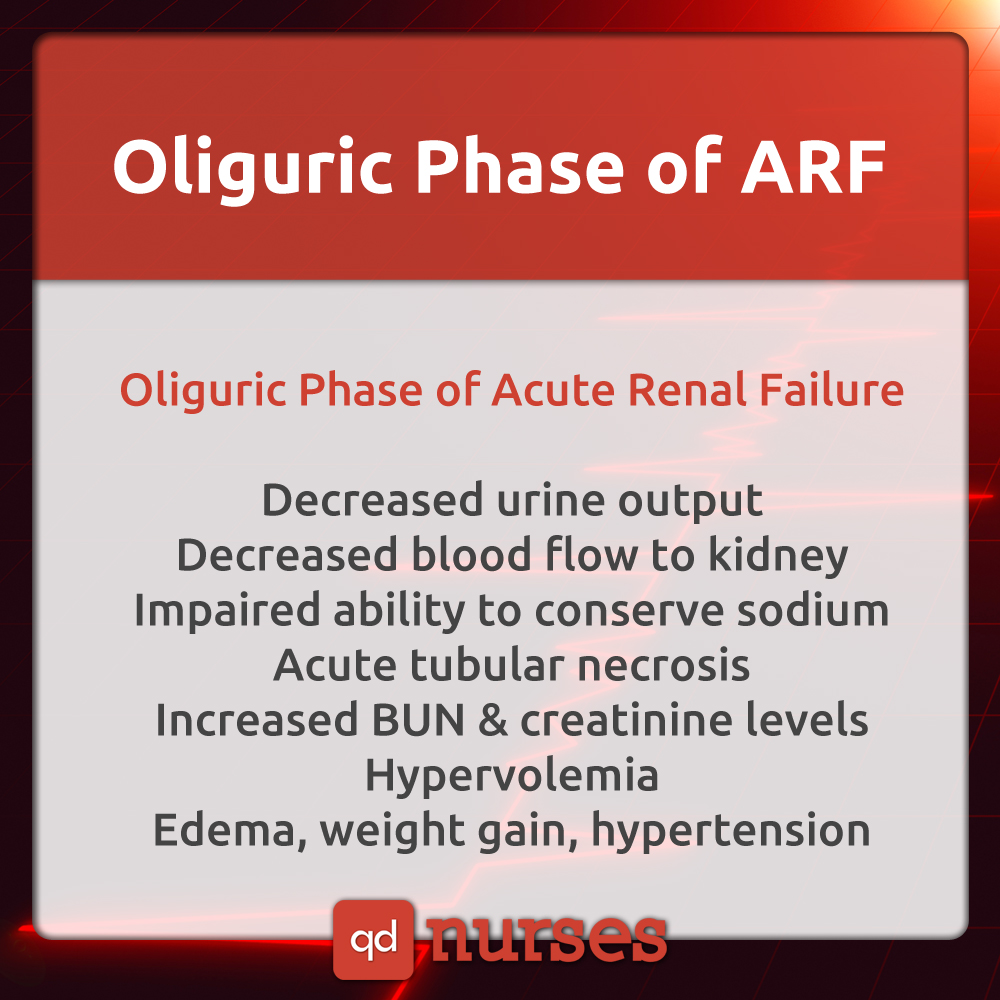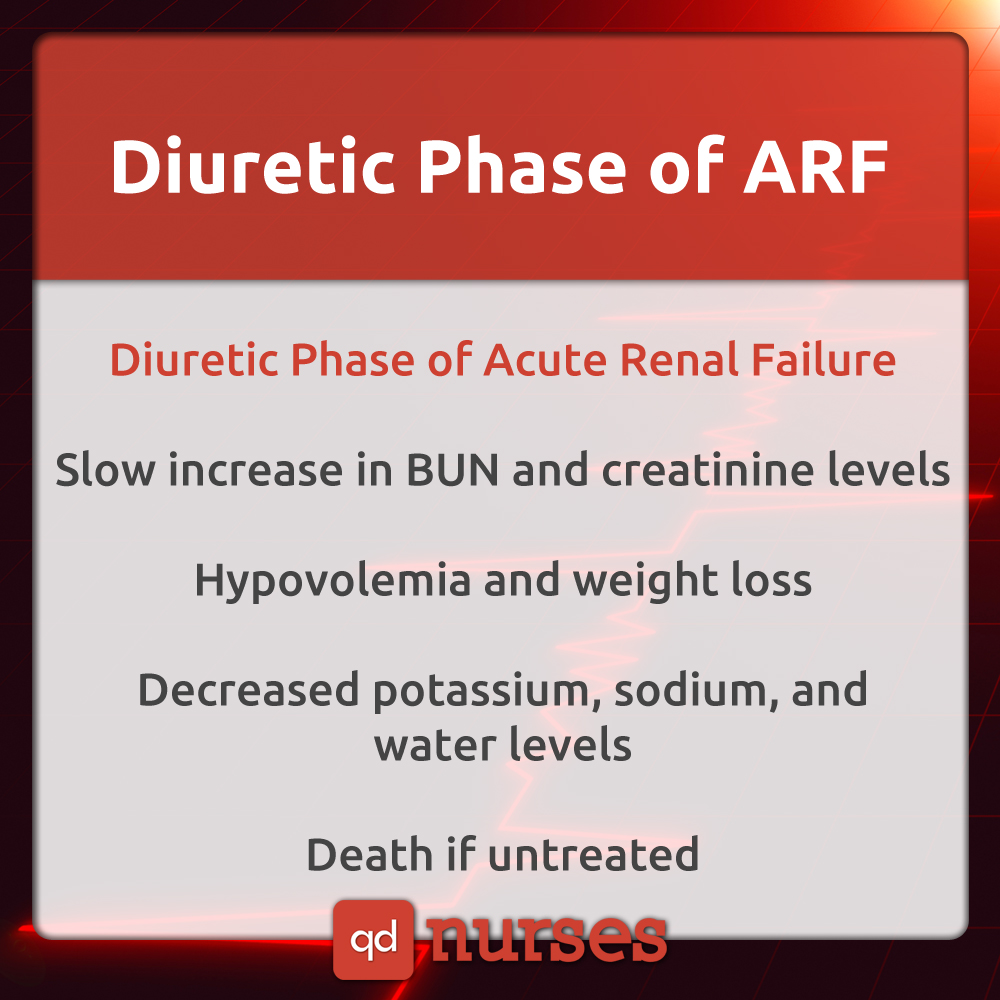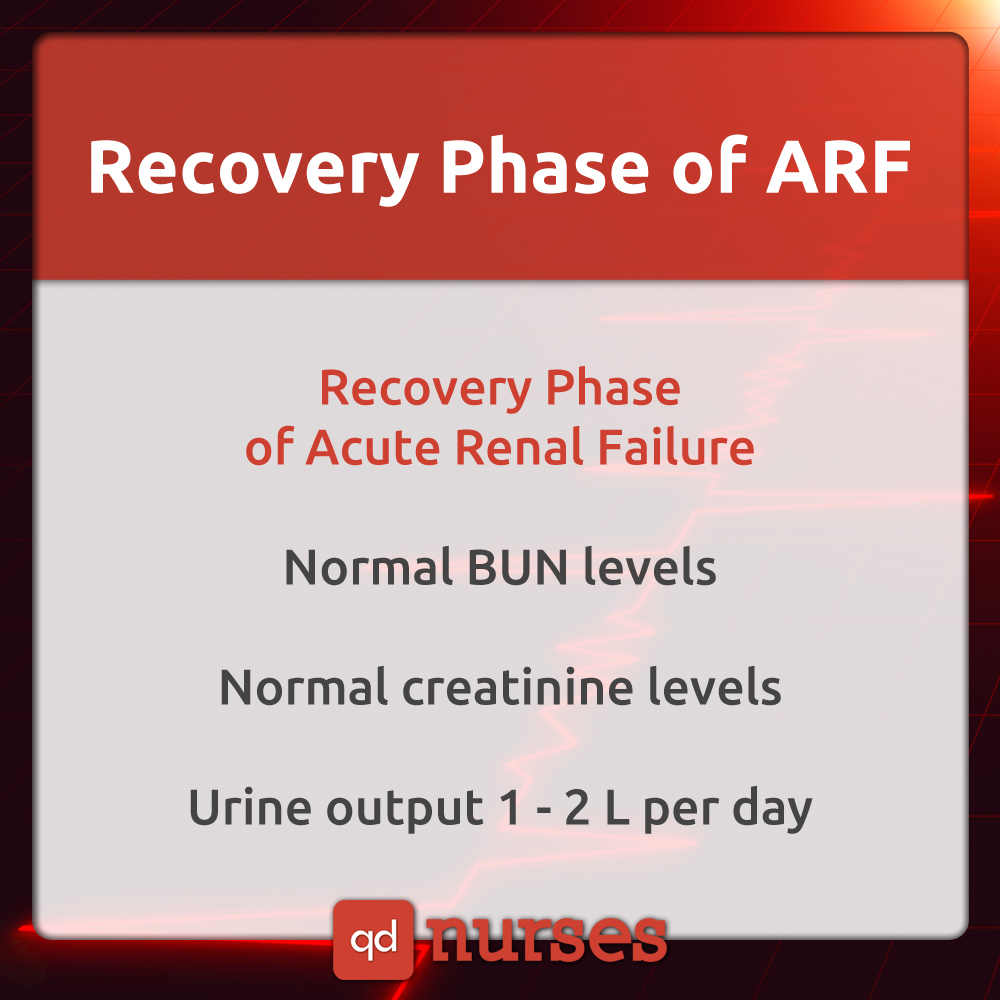Acute Renal Failure

- Can be classified as prerenal failure, intrarenal failure, or postrenal failure.
- Can be reversible.
- Can lead to chronic renal failure.
- Caused by obstruction, poor circulation, or kidney disease.
- Interruption in flow can lead to serious failure.
Phases of Acute Renal Failure: Oliguric, Diuretic, Recovery (ODR)
Oliguric Phase

- Oliguria – Decreased urine output of less than 400 ml/day
- Prerenal oliguria – Decreased blood flow to the kidney
- Impairment of kidney’s ability to conserve sodium
- Acute tubular necrosis
- Increased BUN and creatinine levels and decreased ratio of BUN to creatinine
– Normal levels 20:1
– Abnormal levels: 10:1 - Hypervolemia
- Edema, weight gain, and elevated blood pressure
how to remember this
Logic – If the kidney is not assist the body in urinating, the fluid is still inside the body. The patient would gain weight due to the fluid retention, which causes edema. The blood pressure would go up as a result!
Diuretic Phase

- Mild increase in BUN and creatinine levels
- Hypovolemia and weight loss
- Decreased levels in potassium, sodium, and water levels
- Can lead to death if untreated
Recovery Phase

- Normal BUN levels
- Normal Creatinine levels
- Urine output between 1 and 2 L a day
what to look out for
Early signs and symptoms
- Oliguria
- Azotemia (Excess urea levels in blood)
- Anuria (Failure to secrete urine). Usually patients can still urinate so this symptom is rare.
Later signs and symptoms
- Electrolyte imbalance
- Metabolic acidosis
- Disruption of other body systems
